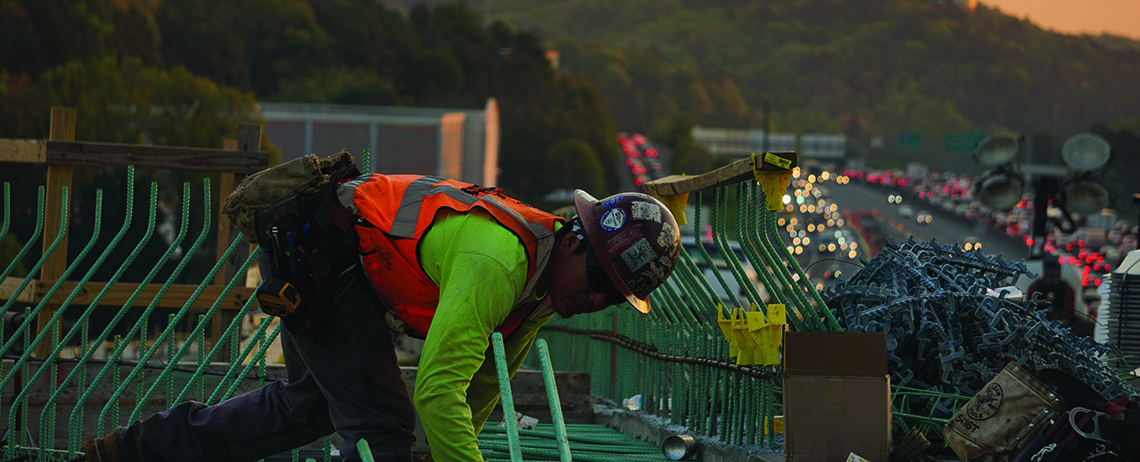Subcontractors Take on More Risk at Work. Here’s How to Fix it
SafetyCulture News | By | 20 Sep 2018 | 3 minute read

New research by Australian academics proves what many subcontractors have assumed for years: contract workers have a different experience to their permanent counterparts and it could be putting them in danger.
Griffith University Safety Science Innovation Lab head, Dr Drew Rae, says that safety is a serious issue for subcontractors. “They lack the social, structural and legal protection that other workers enjoy, so there is more opportunity for things to become unsafe and stay unsafe,” he says.
Dr Rae is co-author of the research which looks at how subbies experience different safety levels on high-risk sites.
“Many of the mechanisms we employ to achieve safety, including strong cultures, management systems, training and competency, rely on a stable workforce. Precarious work undermines the efforts we make to ensure that work happens safely.”
There are about 1 million independent contractors working in Australia, according to data from the Australian Bureau of Statistics. In the US, that number is 10.6 million, while in Britain, it’s about 1.9 million.
In Australia, three-quarters of subcontractors are men and more than half are 45 years old or older. Not surprisingly, the construction industry relies heaviest on independent workers, with subcontractors making up about 30 per cent of its workforce, according to the Australian Bureau of Statistics.
Across the board more than 3700 people have been killed at work since records began in 2003. While the number of fatalities has been declining since 2007, Safe Work Australia data suggests there is some evidence that industries reliant on subcontractors have a higher rate of workplace incidents.
Whether that is because the nature of those industries, such as construction and mining are necessarily more dangerous (mining has a 70 per cent higher rate of incident than any other sector) or because the safety parameters are less stringent with subcontractors, is difficult to tell. The problems can be that often in sourcing the cheapest labour deals, corners can be cut in recruitment and training and there’s the potential to pass the buck in the food chain for who is ultimately responsible for overseeing safety, the Griffith University research says.
Dr Rae says part of the problem is that subcontractors feel they will be penalised for reporting injuries or raising safety concerns. “It doesn’t take an official action to punish a casual worker for making a fuss about safety, they just don’t get the phone call to come back the next day,” he says.
Being safe at work is in part the responsibility of each worker, making considered and sensible decisions and speaking up about concerns they have on site with potential hazards. But Dr Rae emphasises that the empowerment of subcontractors is limited.
“Most of the key decisions which affect the safety of work are beyond the control of individual workers,” he says.
“They don’t choose the work site, they don’t purchase the capital equipment, they don’t decide the schedule, or the resourcing or even the personal protective equipment they are provided with. To say that they should take on more personal responsibility is really just to say that they should foot the blame for decisions made by others.”
Dr Rae says safety management systems are about standardising organisational and work practices, but can be a “compliance trap” for workers when there are lots of variables in the picture.
“Far from creating personal responsibility, this just drives ‘role retreat’ where workers do exactly what they are told and take no initiative, for fear of blame if things go wrong.”
One way to avoid that is by throwing the one-size-fits all safety model out the window and investing in front-line leaders and site managers to take responsibility for incident mitigation and management.
More research is needed to see how different experiences of work, such as the “outsider” status, translate into increased risk, but Dr Rae says companies can benefit now from changing their thinking.
“We believe that it is important for companies to stop thinking that ‘subcontractors’ are a safety problem and to start realising that ‘subcontracting’ is a problem,” he says.
“Employing a subcontractor does not absolve the principal contractor of their safety obligations and bureaucratic approaches to subcontractor management don’t successfully extend safety management across contract boundaries.
“Too often, safety issues are used as a stick in contract disputes, where the workers are pawns rather than individuals who deserve to be listened to.”
Important Notice
The information contained in this article is general in nature and you should consider whether the information is appropriate to your specific needs. Legal and other matters referred to in this article are based on our interpretation of laws existing at the time and should not be relied on in place of professional advice. We are not responsible for the content of any site owned by a third party that may be linked to this article. SafetyCulture disclaims all liability (except for any liability which by law cannot be excluded) for any error, inaccuracy, or omission from the information contained in this article, any site linked to this article, and any loss or damage suffered by any person directly or indirectly through relying on this information.





